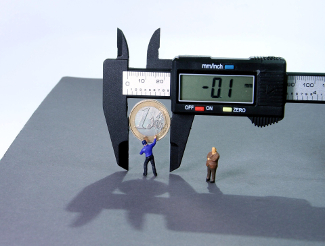The United States is nearly alone among major world central banks in not moving towards negative interest rates. That zero lower bound remains a lower bound. But in the event of another financial crisis, might the Fed decide to push rates below zero, just like the European Central Bank and the Bank of Japan have done? And if so, what effect would that have on Bitcoin and cryptocurrency?
One type of cryptocurrency with rising popularity are stablecoins. These coins are backed by supposedly stable assets such as physical cash, short-term government debt, or other high quality liquid financial instruments. That lends them a feeling of security and respectability that might entice some investors who otherwise would look askance at “unbacked” cryptocurrencies such as Bitcoin, Litecoin, and Ethereum. They’re essentially a new digital currency backed by a currency basket, not exactly a novel idea.
In the event of worldwide negative interest rates, however, there’s the prospect that those stablecoins could actually generate negative returns. Trillions of dollars of sovereign debt worldwide is already negative-yielding, and central banks returning to monetary stimulus could increase that sum significantly. If a stablecoin is backed by negative-yielding debt then, instead of stablecoin investors potentially increasing their assets through interest, they could actually lose stablecoins through negative interest rates. And if the whole idea behind stablecoins is to provide stability, what investor would want to invest money in an asset that is guaranteed to lose money?
The future for stablecoins, therefore, remains unsure in an era in which negative interest rates may become increasingly common. But stablecoins’ loss is Bitcoin’s gain. It’s almost certain that investors fleeing stablecoins would seek a safe haven with Bitcoin.
Bitcoin’s advantage is that it doesn’t have a central entity behind it to continuously inflate the supply of coins, nor is it dependent on the actions of third parties such as central banks. If central banks continue to devalue their own currencies through negative interest rates and quantitative easing, investors will treat Bitcoin more and more as digital gold, an asset that maintains its value through tough economic times and that won’t lose value through inflation or negative interest rates.
Bitcoin was born from the lessons learned during the last financial crisis, and it will face its first big test during the next financial crisis. Right now everything seems to be aligning just perfectly for Bitcoin to make a great breakthrough once the next crisis rears its head. When that crisis occurs, stablecoins’ illusion of stability will be shattered, and Bitcoin will establish itself as the cryptocurrency of the future.
This article was originally posted on Coin IRA.





